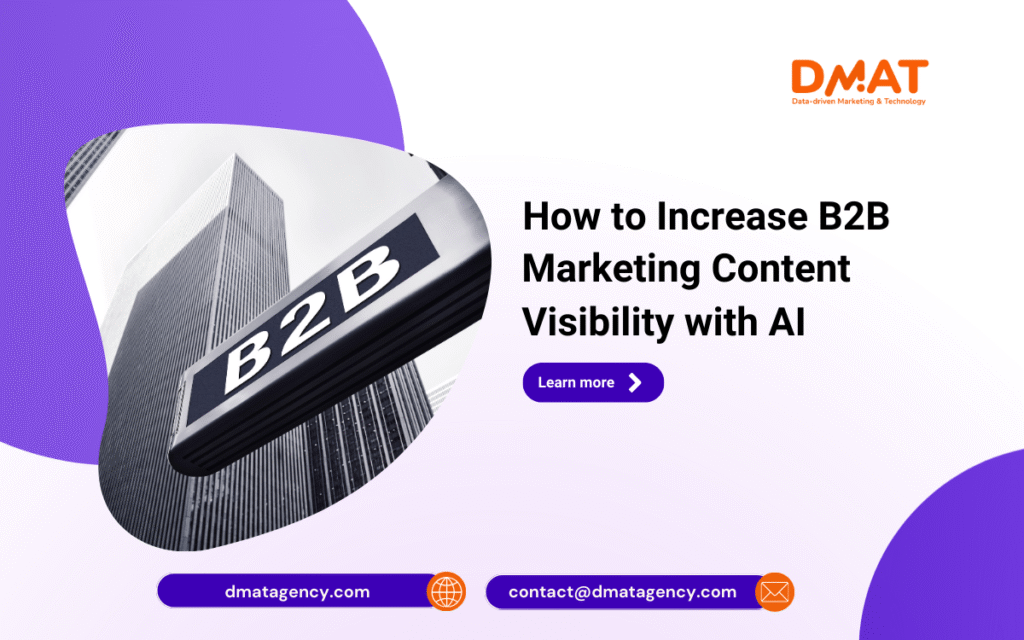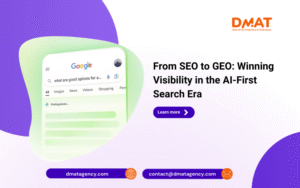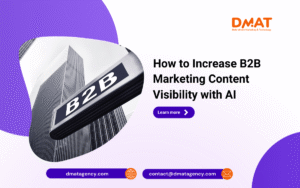B2B brand discovery is evolving rapidly. Instead of scrolling through traditional Google results, buyers and decision-makers are turning to Generative AI platforms like ChatGPT, Gemini, and Perplexity to get industry answers instantly. This shift redefines what visibility means for marketers: if your brand isn’t in AI-generated answers, it’s effectively invisible.
This article explores how to increase B2B marketing content visibility with AI by combining Generative Engine Optimisation (GEO) and AI Optimization (AIO) strategies. You’ll learn practical steps to adapt your content so it’s easy for AI to process, surface, and present – ensuring your brand remains visible in the age of generative search.
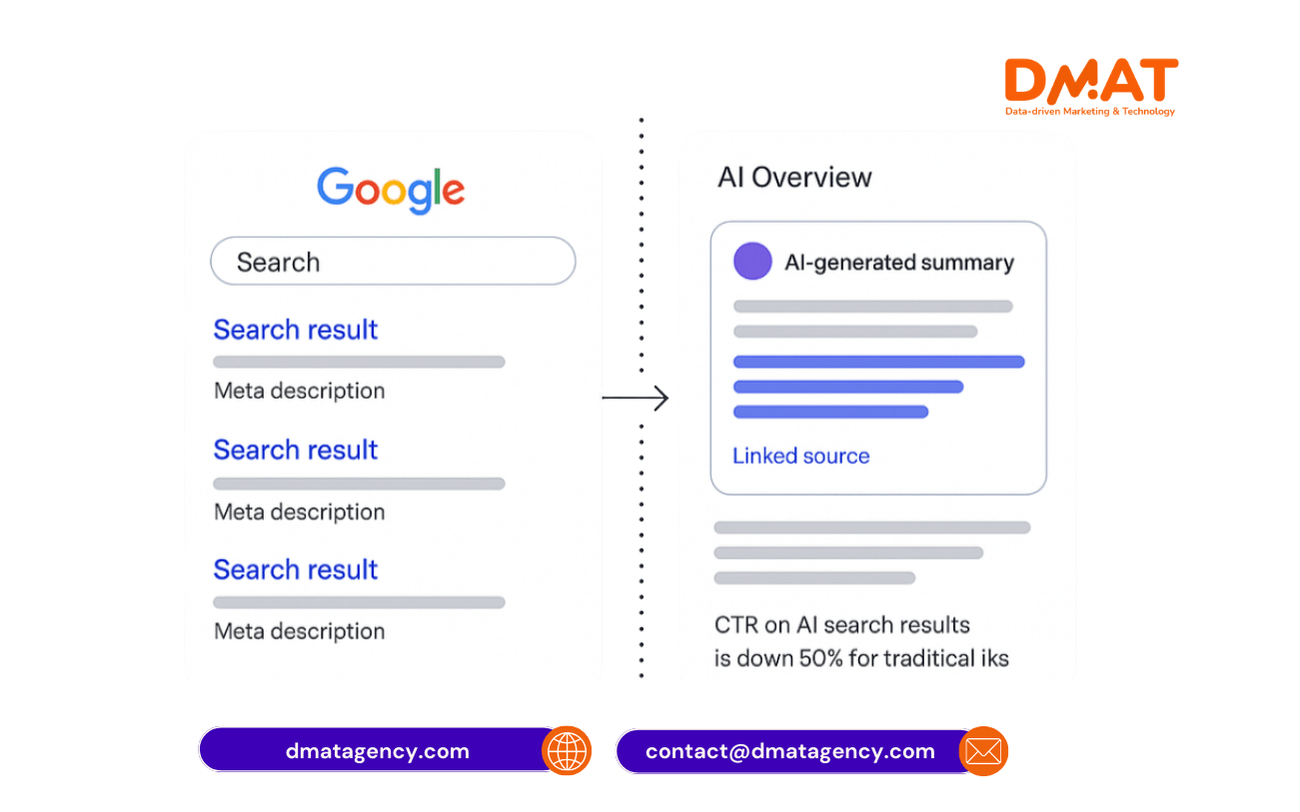
From search results to AI answers
Table of Contents
ToggleTL;DR
- Track AI Overviews: Identify which queries show your brand in Google summaries and benchmark against competitors.
- Create chat personas: Model user interactions to align with AI-driven conversational search.
- Optimise headlines: Use natural, concise, and query-matching titles to improve AI content inclusion.
- Structure for skimming: Use bullet points, FAQs, and short summaries to improve AI parsing.
- Leverage AI for content creation: Use AI tools for keyword research, drafting, and optimisation for semantic search.
- Personalise at scale: Deliver tailored, AI-informed content experiences to different buyer personas.
- Track AI citations: Monitor how AI models summarise and reference your content to refine strategy.
What is Generative Engine Optimisation (GEO) and AI Optimization (AIO)?
Traditional SEO is about ranking high in search results. GEO focuses on being cited in AI-generated answers when buyers ask about your industry, products, or expertise. Generative engines like ChatGPT, Gemini, and Perplexity synthesise multiple sources, often without attribution unless prompted.
AIO (AI Optimization) extends this by optimising your content specifically for AI-powered search and information consumption. It’s about making sure your content is:
- Accurate: AI models reflect your brand correctly.
- Structured: Easy for LLMs to parse and summarise.
- Authoritative: Credible enough to be selected over competitors.
In short: SEO optimises for search engines, GEO ensures inclusion in AI outputs, and AIO fine-tunes your content for the way AI processes and delivers information to B2B buyers.
Example of GEO and AIO in Action
Consider a dual-use technology firm that develops drone detection systems for both military and civilian airports. If a procurement officer asks ChatGPT, “Who are the innovators in airport drone detection?” the AI will pull from sources it deems most relevant and trustworthy. If the firm hasn’t published structured, high-authority, and AI-friendly content, the AI may overlook it entirely even if it ranks well in Google.
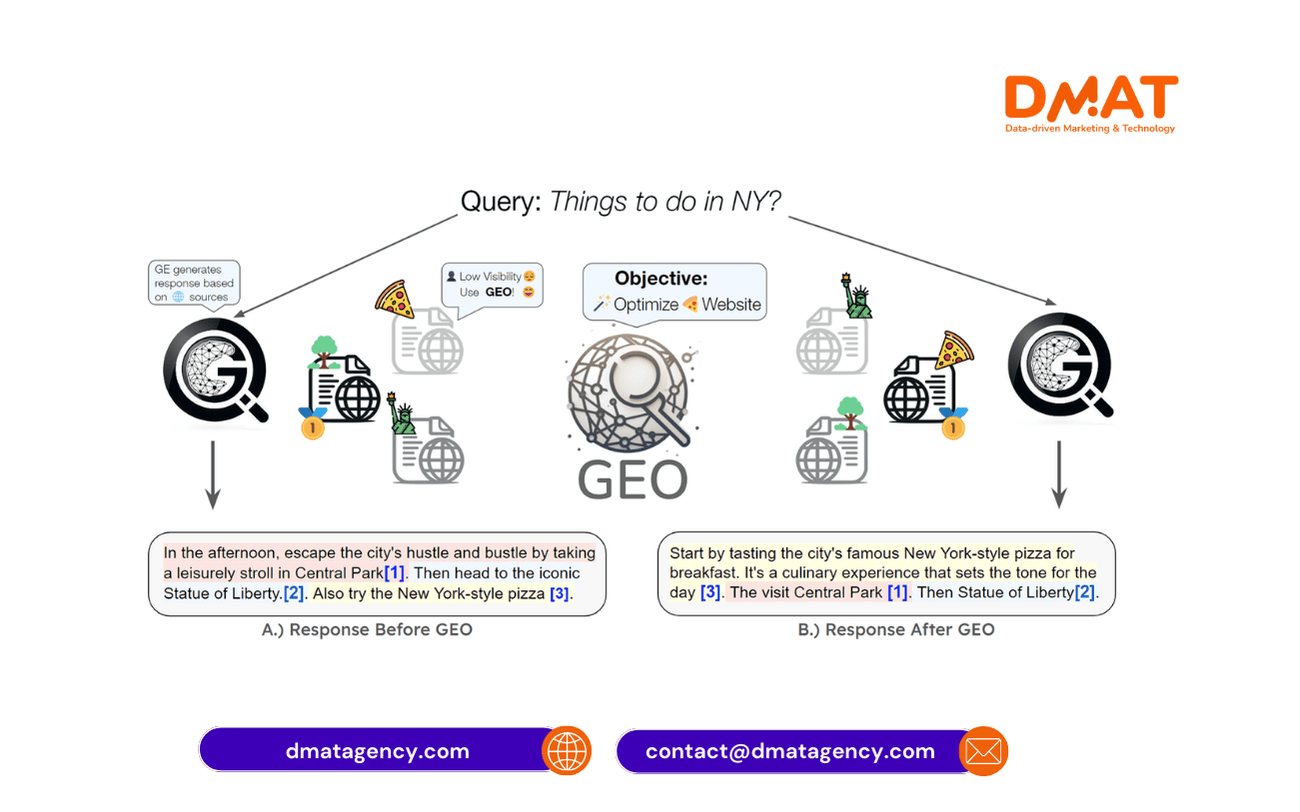
Explain GEO
How AI Platforms Scrape and Present Content
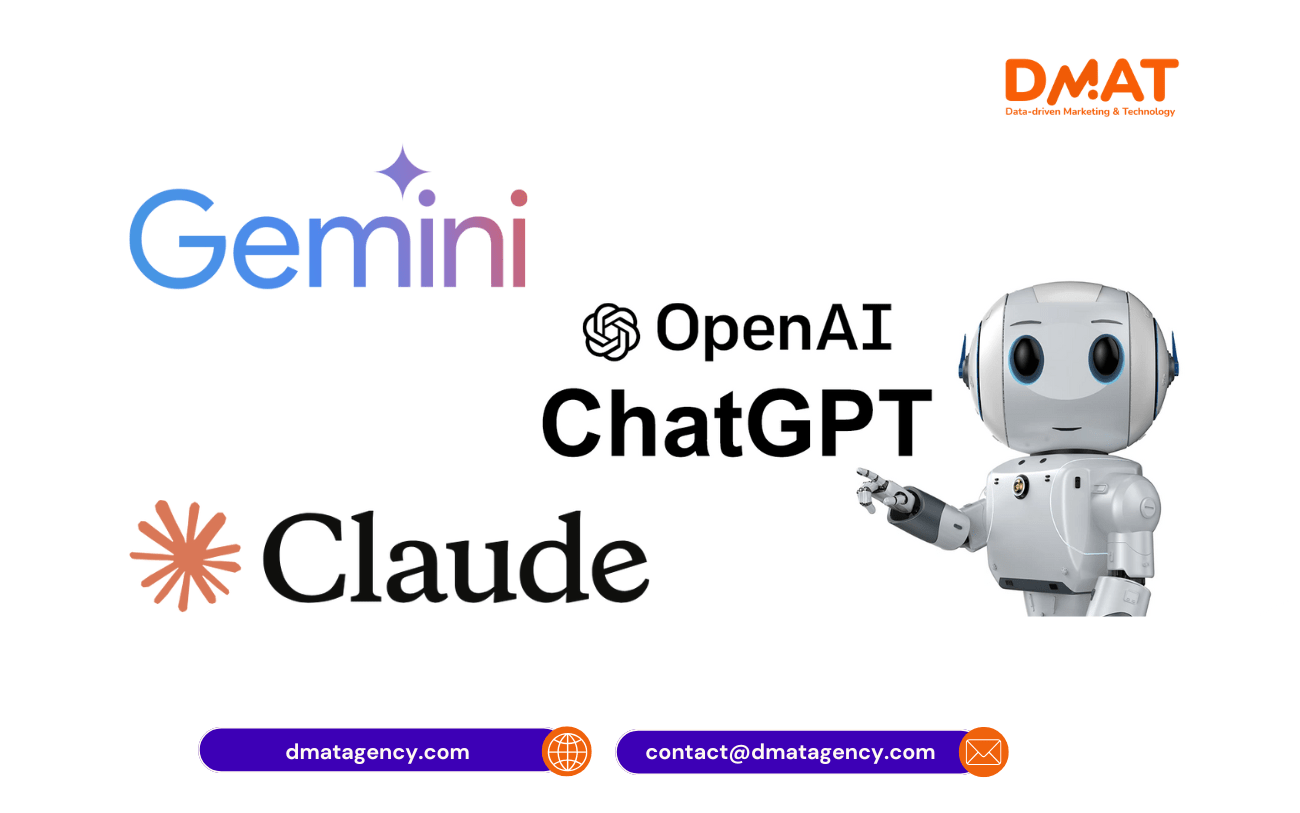
Different AI platforms use varying data sources and citation methods to present B2B content.
| Platform | Data Sources | Citation Style | Strengths for B2B | Weaknesses for B2B |
|---|---|---|---|---|
| ChatGPT | Web data + licensed datasets | Limited unless prompted | Conversational, great for how-to queries | May omit brand mentions |
| Gemini | Live web + Google index | Inline citations | Strong SERP integration | Biased toward top-ranking sites |
| Perplexity | Live web + real-time sources | Direct citations | Transparent, link-rich | Lower adoption in niche sectors |
AI’s Role in Enhancing B2B Marketing Content Visibility
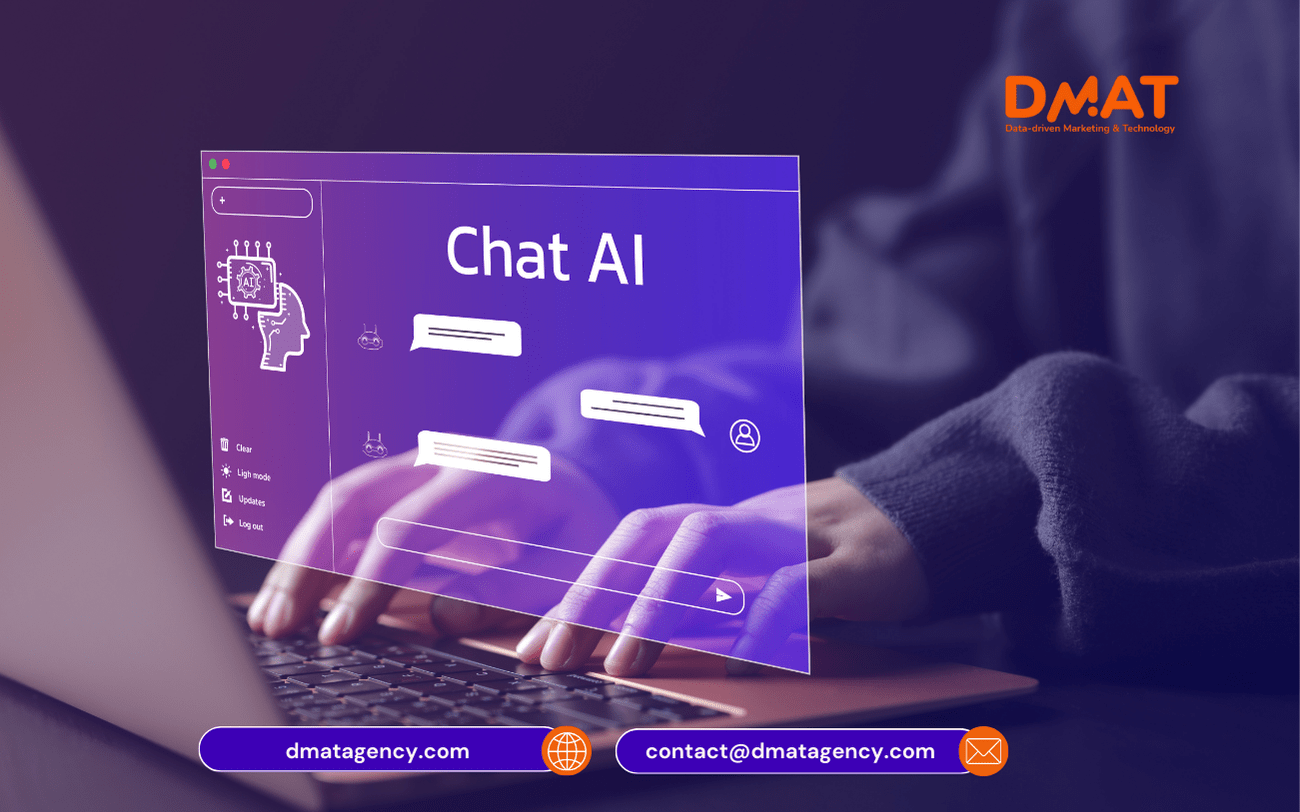
Using AI to increase B2B content visibility and engagement
AI-Optimised Content Creation
AI tools can streamline keyword research, topic ideation, drafting, and on-page SEO. They help structure content so AI models interpret it clearly — boosting the chance of inclusion in AI-generated answers.
AI Search Visibility (AIO)
Beyond SEO, AIO ensures your content is discoverable and accurately represented in AI-generated summaries. This requires optimising for semantic understanding, clarity, and topical authority — not just keyword density.
Adapting to AI-Assisted Buyer Journeys
B2B buyers are using AI at every research stage. This means zero-click searches where buyers get answers directly from AI without visiting your site — are now part of the funnel. Your content still needs to shape those answers, even without a direct click.
Performance Tracking and Analytics
Use AI-driven analytics to monitor how your content is summarised and referenced by LLMs. This feedback loop enables constant improvement.
Personalisation at Scale
AI enables customised content delivery to different buyer personas, increasing relevance and engagement.
Recommendations for Increasing B2B Marketing Content Visibility with AI
- Treat AI overviews as your new “front page” – track brand mentions in AI summaries using tools like Semrush, BrightEdge, or AI Search Grader to benchmark visibility against competitors.
- Build chat personas for content strategy – develop interaction profiles that reflect real AI-driven buyer queries to guide content creation and messaging.
- Optimise headlines and subheadings for AI logic – use concise, conversational titles that match searcher intent and improve AI content selection.
- Structure content for clarity and skimming – incorporate bullet points, summaries, and direct definitions to make content easier for AI models to parse.
- Repurpose for high-AI-value platforms – adapt and share content on LinkedIn, Reddit, and Quora to expand presence in AI training datasets
FAQ
What is the difference between GEO and AIO?
GEO ensures your content appears in AI answers, while AIO optimises it for AI processing and accurate presentation.
How does AI impact B2B marketing content visibility?
AI changes how buyers discover and consume information, requiring marketers to optimise for AI-powered search and summaries.
Can AI-optimised content still improve SEO?
Yes. Many AIO best practices structured content, clear answers, authority — also benefit traditional SEO.
What are zero-click AI searches?
These are AI-generated answers that provide information directly to the user without them visiting your website.
How can I track my content in AI responses?
Use AI monitoring tools like BrightEdge, AI Search Grader, or Perplexity’s citation tracking features.

